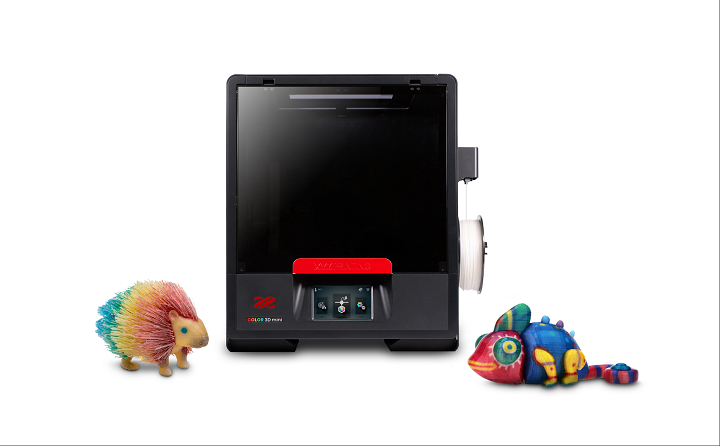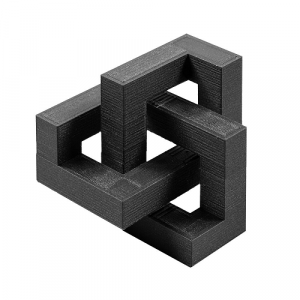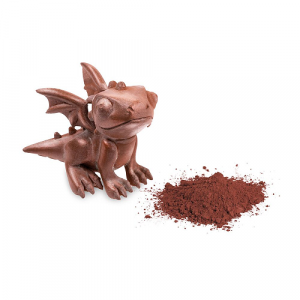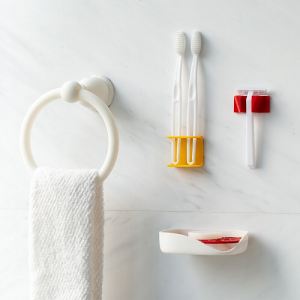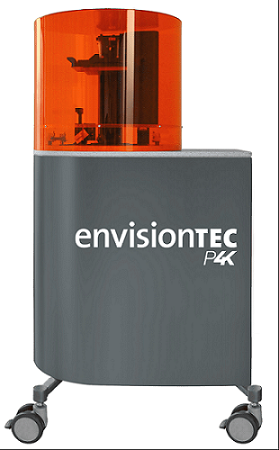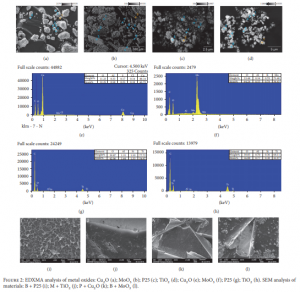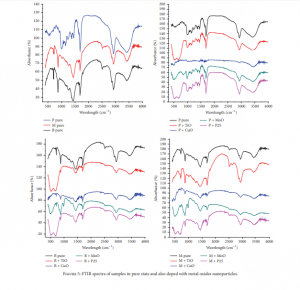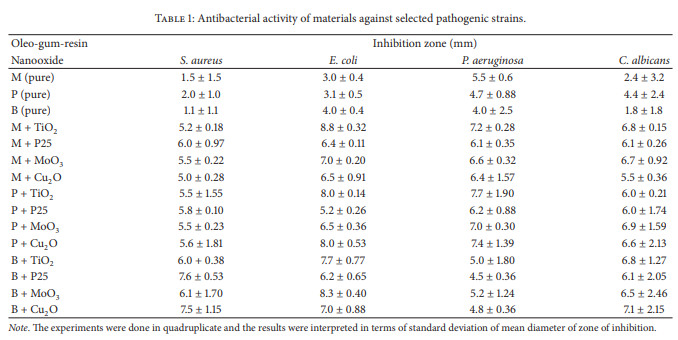Today in Las Vegas, CES 2019 officially kicked off, though the official CES Unveiled media event took place on Sunday at the Mandalay Bay hotel. Taiwan-based 3D printer manufacturer XYZprinting attended the media event and showed off its newest product, the consumer-oriented da Vinci Color mini, which was first introduced this summer. The company plans on unveiling several additions to its 3D printer line at the show this year, including an upgraded extruder option and an expanded filament line.
XYZprinting is committed to making 3D printing more accessible to the masses, and the compact da Vinci Color mini, its second-generation desktop full-colored FFF 3D printer, is crushing full-color 3D printing size and price barriers. It’s a good choice for consumers, designers, makers, and small business owners looking to use full-color 3D printing for the purposes of prototyping. The da Vinci Color mini uses the company’s 3DColorJet technology, which creates millions of color combinations by applying a single CMY ink cartridge to a color-absorbing PLA filament; however, it’s also possible to print in monochrome if you wish.
“Our investment in full-color 3d printing technology has opened the door to the next level of 3D printing innovation. By providing an affordable and compact full-color printer, we are very pleased to be bringing color 3D printing technology within reach for small businesses, schools, designers, makers and general consumers,” said XYZprinting CEO Simon Shen. “We will continue to provide innovative, high-quality 3D printers while making it affordable for everyone to utilize this technology and incorporate it into their daily lives.”
 The da Vinci Color mini features a 5″ color touchscreen, which gives users an intuitive way to work the user interface, and also comes with a 5.1″ x 5.1″ x 5.1″ EZ-removable print bed.
The da Vinci Color mini features a 5″ color touchscreen, which gives users an intuitive way to work the user interface, and also comes with a 5.1″ x 5.1″ x 5.1″ EZ-removable print bed.
In addition, there are several upgradeable options for the desktop 3D printer, such as a Laser Engraver module for engraving on leather, paper, wood, and other materials, and a Hardened Steel nozzle for 3D printing with some of the company’s newest materials.
The newest filaments by XYZprinting include a Metallic PLA and a Carbon Fiber PLA, which gives users access to higher-performing materials. The Hardened Steel nozzle upgrade, which is very wear-resistant in terms of these more abrasive materials, will cost 119.95 with the da Vinci Color series, and $79.95 for select XYZprinting 3D printers, like the da Vinci mini-series and the da Vinci Jr. Pro. series.
The company also launched an additional new filament that was designed with antibacterial properties. The special Antibacterial PLA inhabits bacterial growth by at least 99% through the use of silver ions, which majorly lowers the risk of infections.
Because the Antibacterial PLA comes with enhanced protection against germs and infections, it’s a safer and more hygienic choice of material for young kids who are just starting to learn about 3D printing. Educators and parents who use this new filament can rest assured that their 3D printing experience will yield safe, functional prints that can be used in the household and the classroom with no worries. A 600 gram spool of XYZprinting’s new Antibacterial PLA costs $29.95 on the company’s online eShop, and the material is compatible with the company’s Color series, Nano series, da Vinci Jr. and Jr. Pro series, and the da Vinci Super 3D printer.
The company’s newest 3D printer, along with its other new products, materials, and accompanying software, will be available for purchase by the end of the first quarter of 2019 on the XYZprinting online eShop. At just $1,599, the da Vinci Color mini is a more affordable option for users interested in full-color 3D printing. You can take a look at all of these new products, along with a range of other commercial 3D printers and ancillary products, at XYZprinting’s booth #31524 in South Hall 3 of the Las Vegas Convention Center (LVCC) at CES 2019 this week.
Discuss this news and other 3D printing topics at 3DPrintBoard.com or share your thoughts in the Facebook comments below.
[Images provided by XYZprinting]

